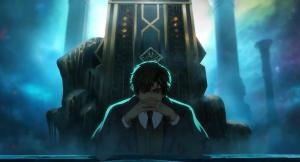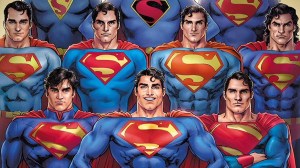Today marks the release of Generations Forged #1, a DC mini-event that helps recontextualize the “metaverse” from Before Watchmen, which gave way to the “omniverse” in Dark Nights: Death Metal. How? Well, it introduces the “linearverse,” and if you’re getting lost already, you can be forgiven…but at least this particular version will be easy to remember because it’s, frankly, so simple. Reminiscent of former DC publisher Dan DiDio’s oft-repeated philosophy that “everything counts,” Generations Forged #1 contends that the Batman from 1939 and the one currently walking around in modern comics are the same guy, just like every DC superhero (and villain) is the same as they’ve ever been.
Videos by ComicBook.com
Needless to say, there’s some spoilers to follow. Be aware.
In the Linearverse concept, there’s a really simple and intuitive way of looking at the passage of time in the DC Universe: “Here, people age far more slowly, living much longer than elsewhere,” the time-traveling Linear Man known as Waverider tells Batman, upon returning him to 1939 at the end of the crisis. “Your youth and vitality will endure for decades, enabling you to be effective far longer than the universal norm.” The idea here, related through a splash page in the final moments of the issue, is that there is a DC Universe that evolves with the times, so that every version of the characters you’ve ever read is the same version, and everything that ever happened to them, happened. It’s an in-universe recognition of the “rolling timeline” that comics have used since Marvel pioneered the truly shared universe and timeline. In Doomsday Clock, Geoff Johns acknowledged it for Superman, but this widens and clarifies it somewhat.
The issue also suggests that, in Crisis-level events past, it’s possible that the worlds wiped from existence weren’t really wiped out, but “hidden.” The comic itself does not go so far as to say that, but it certainly is what happened to the worlds apparently destroyed in Generations Shattered #1, which read like a sequel to Zero Hour, a 1994 miniseries written and drawn by (Generations Forged co-writer/artist) Dan Jurgens which marked DC’s first official follow-up to Crisis on Infinite Earths.
“What if those eras weren’t destroyed…but moved?” Batman asks at a key moment in the story. “Is it any more farfetched to believe those eras are out there somewhere, hidden, than to think we’ll eventually rebuild hundreds of millions of years’ worth of time?”
That he eventually turns out to be right raises the same question for every other universe that’s died — especially those that have come back years or decades later, seemingly unchanged — in DC’s publishing history.
Generations: Forged #1 is on sale today at comic shops and online.









